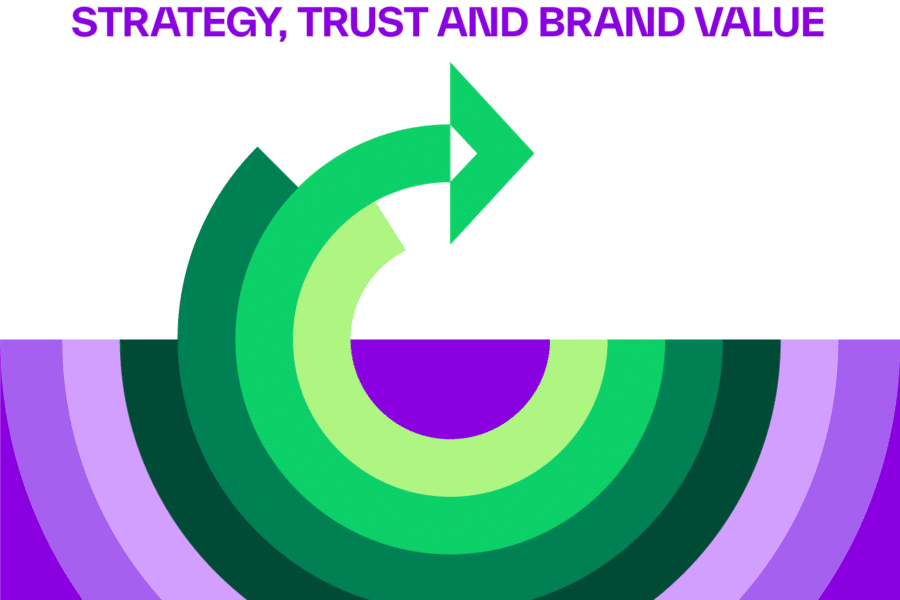Infuse Sustainability into Your Brand Strategy
Significant environmental and social challenges brought on by the pandemic and climate change have demonstrated how fragile our globally interconnected systems are. The severe threats posed by these disruptions have compelled corporates to embrace sustainability strategies; they use these challenges as catalysts for change and seek innovative solutions to stay relevant.
Sustainability—a business and brand imperative
Incorporating sustainability within the corporate strategy can be an effective risk management tool and a source of differentiation from competitors. However, many brands are diluting their identity by relying on box-ticking exercises to ensure environmental and social compliance.
To move from a surface-level nod to a competitive advantage, the challenge is to make sustainability an engine of growth (throughout operations) and a defining attribute of the brand (through communications).
Sustainability is a source of brand differentiation
A starting point for businesses is collectively evaluating their company and sustainability strategies. This establishes the extent to which they are united, mutually supporting, or even in opposition. The next step is to leverage stakeholder engagement and social listening to understand how tangible areas of the brand align or conflict with stakeholder priorities.
Unification of quantitative and qualitative analysis facilitates brands in assessing the gaps and opportunities discovered at the intersection of business and sustainability strategies. Allowing leadership to explore differentiating future scenarios and initiatives that embed sustainability and drive competitive brand advantage.
For executives, the question then remains of how to embed and communicate these benefits to their stakeholders. Cursory communication on good intentions is insufficient. Instead, corporations must walk the talk by infusing sustainability throughout operations, culture, and experiences.
Integrating brand and sustainability strategy is key
To leverage the business opportunities of sustainability, brands must seek alignment between brand identity, business priorities, and shared value creation. Brands must execute initiatives throughout the value chain and communicate sustainability efforts in both proactive and characterising ways.
Start by completing an audit, benchmarking, and competitive analysis. Then, confirm the opportunities for brand leadership. Thereafter, companies must continue embedding sustainability strategy operationally, and through communications, in the following ways.
1. Setting a metamorphic purpose to stand up and stand out
Identifying a clear and differentiating purpose, that aligns the business with wider societal considerations, can strengthen brand value and inspire behavioural change. However, a purpose can’t be a sweeping broad statement. From climate change to gender equality to social justice, brands must take a stance on issues that matter. This is now the common expectation of key stakeholders, from consumers to partners and employers.
A meaningful, memorable, and measurable purpose will guide a brand’s every action. From goal setting to design, through to programming and supply chain management, to marketing and communications.
2. Sustainability programmes provide the impetus to positive transformation
To bring discipline to your integrated brand and sustainability efforts, effort must be extended to create programmes and incentives that drive inspired performance that meet your goals. Programmes create a culture of system-wide innovation and will align your employees and partners to deliver on corporate, customer, and societal expectations. Ultimately, programmes, and their related brand campaigns, are the pathway to provide the inspiration to meet the aspiration.
3. Evolving the corporate culture and employer value proposition
The brand promise a company makes to its people should be an extension of the promise it makes to the market. This means businesses should seek to create a culture of sustainability that engages, motivates, and empowers all your people to make that transformation happen. Establishing how every employee can contribute to delivering on the sustainability strategy empowers each individual to participate in the journey and enhances their commitment to the brand. Linking programming to the employee experience, culture, and performance targets is vital.
4. Measuring and reporting
Championing transparency and accountability through robust measurement and reporting builds credibility and enhances brand reputation. However, this shouldn’t be limited to annual sustainability reporting. To meet and sustain the communication demands of both investors, and a generation of consumers and employees with the shortest attention span in history, companies need to balance producing sustainability reports with bite-sized progress updates and stories that humanise the positive impact a brand is having. Regular social media progress posts, for example, will help lift sustainability off the reporting page. They will ensure a feedback loop is implemented and allow corporate messaging to be propagated by every stakeholder. This also bolsters the company’s reputation, boosts credibility, and drives sustainability objectives for wider society.
Integrating sustainability with the brand enhances shared value
Corporations are value-providers at heart. By unifying corporate and sustainability strategies, and tapping into the purpose at their core, they can communicate their unique sustainability commitments through their brand, culture, and actions. Savvy corporates ensure their brand promotes sustainability as a key differentiation from their competitors.









